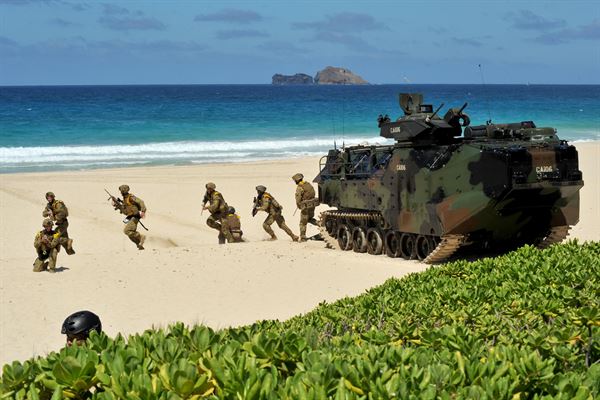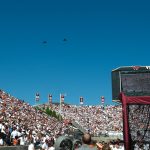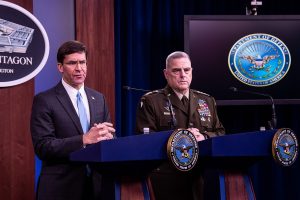by Jon Letman
In the days since Hawaii’s Emergency Management Agency mistakenly issued an emergency alert warning of an inbound ballistic missile to over a million people, many of us in Hawaii have been thinking a lot about weapons and war.
The reaction to the January 13 false alarm has ranged from the deliberative (state legislature hearings) to the deranged (death threats against the unnamed employee who clicked the wrong option and triggered the scare). There has been discussion of the need for a better alert system and a faster response time in case of false alarms.
Critics have pointed out a lack of public preparedness, while others argue that it’s a moot point. Still others see the missile scare as a call to load up on guns, iodine tablets, and MREs in preparation for a post-apocalypse Hawaii.
Everyone agrees that the frightening mishap should serve as a wake-up call not just for Hawaii but the entire country. The debate over how much duct tape and Vienna sausage to keep in stock in case of a nuclear attack overlooks the U.S. role in perpetuating a system that terrorizes people around the world.
Hawaii is home to the U.S. Pacific Command (PACOM), the oldest and largest of America’s unified commands. Under PACOM, soldiers and weapons from every branch of the military are stationed, tested, trained, and cycled through Hawaii to conflicts and flashpoints from Syria and Iraq to Afghanistan, the Philippines, the Korean peninsula, and beyond.
The military’s financial influence over the Aloha State is enormous, accounting for $7.8 billion in spending in 2015 and employing over 64,000 defense personnel plus many thousands more who are economically dependent on the military presence.
In 2014, Hawaii ranked second in the nation (below Virginia) as the state with the highest defense spending as a percentage of its GDP. That same year, Honolulu County was in the top 10 (seventh place) for defense contracts. In 2017, Hawaii maintained its second highest ranking (nearly 10 percent) for defense spending as a portion of GDP.
From the dispatch of battleships to the testing of weapons and training of warriors, Hawaii is central to military operations across the region and around the world. Hawaii is a key test site for ballistic missiles, radar, sonar, fighter jets, drones, bombers, and advanced hypersonic weapons intended to strike anywhere on earth in under an hour.
Hawaii-based troops participate in everything from assault missions in Iraq and fighting insurgents in the Philippines to war games and military training on the Korean peninsula and Japan. It conducts these operations from Singapore to Australia and the Arctic. As such, Hawaii plays an enormous role in U.S. global military operations.
Increased military activities, many of them executed or advanced by the U.S., also leads to heightened tensions, internal conflict, invasions, and occupations and wars with both direct and indirect support for actual bombs dropped on actual people.
Pointing this out however, is not likely to be met with much enthusiasm or support. According to a recent NPR/PBS poll, 87 percent of respondents reported having “a great deal” or “quite a lot” of confidence in the military compared with confidence in the media (at a tepid 30 percent).
Although members of Congress and the president complain that the Pentagon has been “gutted,” the United States continues to outspend all other countries by a long shot—nearly as much as the next nine largest military budgets (seven of which are close allies or strategic partners) combined.
The United States also remain the world’s largest arms dealer, accounting for roughly one-third of all global arms exports, with sales increasing more than 20 percent between 2007 and 2011.
In Trump’s first year, he unleashed a $60 million Tomahawk missile attack on a Syrian air base, dropped the largest non-nuclear bomb in the U.S. arsenal in Afghanistan, and insulted his way to the brink of a nuclear war against North Korea.
Meanwhile Trump is pushing to expand U.S. plans to modernize its nuclear weapons arsenal at a staggering projected cost of $1.2 trillion over the next 30 years. Trump, who reportedly asked, “If we have [nuclear weapons], why can’t we use them,” wants to develop “more usable” nuclear weapons deceptively called “mini-nukes” in order to create a “more credible” deterrent.
The false alarm that Hawaii recently experienced was terrifying, but it pales in comparison to the brutal reality other people experience when actual bombs fall. This militarism, perhaps America’s most destructive addiction, pours money into Hawaii’s coffers—but at a price. The real wake-up call has nothing to do with the lack of preparedness and everything to do with America’s own role in fostering insecurity in the world at large.
Photo: Pacific Command military exercise in Hawaii (courtesy PACOM).






The addiction the writer refers to is not military spending as much as the profits that go to the select few who benefit from those profits. These are the most likely addicts. It would be easy to become accustomed to huge financial rewards for doing nothing, or rather fixing legislation that guarantees your investments will profit handsomely no matter what. War or peace. Victory or defeat, these profits just keep on coming like the sun rising every day. I could get addicted to something like that. And I could see going to great lengths to keep that money flowing no matter what. Like I was addicted. What is the difference between these people obtaining this money they cannot spend and a heroin addict getting his fix every day? I suspect if you read their brain waves and other physical measurements you would see the same disease. Addiction. One is legal through Congress and the other gets you imprisoned in the mass incarceration business. So those addicts make more money.